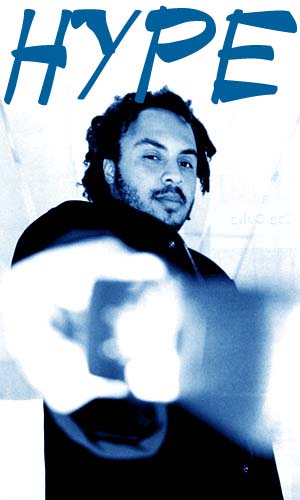 |
||
 |
The advent of music television breathed new life into mainstream music in the 80's. Then in the 90's, the music-video explosion turned hip hop into a monster. For much of the decade, the influential eye behind the video camera belonged to director Hype Williams. Hip hop videos were mired in the dark ages before Williams stepped on the scene with his fish-eye lens, saturated colors and futuristic effects. Hype's cinematic work completely changed the presentation and consumption of hip hop culture, opening the door for other emerging visionaries to develop and document big-budget musical melodramas. --Charisse Nikole Do you consider Busta Rhymes' "Woo-Hah" to be your breakthrough video? >> I would say that. It was something that no one had ever done. Everybody was doing videos that had a nice look, but that was the first time we did something that was bigger. No video had ever looked like that. By definition, that's what a breakthrough video is. Do you think the approach to making music changed with the explosion of bigger videos? >> Before, music was music and visual was visual. Now, the two are one and the same. People make records with the visuals in mind. They see themselves a certain way, and it impacts how they sound. Stuff sounds so monumental. Rap music has become an even. Certain rappers like Jay-Z, DMX, Biggie and Busta are products of an era, where rap music has become larger than life. |
|
Of the videos you've made, which is your favorite? >> I would have to say Wu-Tang Clan's "Can It Be All So Simple." That was the first video I did that captured everyone the way I wanted to. Shit was all dark and grimy. The video and the song complimented each other, and it sparked a new era in videos and music. It affected the tone of videos, the things I did and how people responded to it. People seem to want that Hype Williams look and feel in their videos. Does that ever get monotonous for you? >> Yes, and when I feel like that, I stop. I've stopped at different points, like I'm about to do now. You've got to recharge your batteries. It's important to take time to reflect on what you've done and figure out some kind of growth pattern. When you do the same thing, it's not interesting. If it's not interesting to anybody, I can't figure out why I would be doing it. How do you know when you've had enough? >> I don't see the next Busta, DMX or Biggie. I don't see what I've seen in them coming from anywhere else. I'm not saying that it doesn't exist, but I haven't seen it. When I can't see it, I don't have that vision. Somebody else may see in the Hot Boys what I saw in Biggie. Someone else has to dictate change. I was the one from my era. There has to be someone else from the next. What's your impact on music and music videos? >> I helped put that larger-than-life spin on the music. If rap videos were big, I made them look bigger. Rap artists were talented, but I made them look much more talented than they actually were. The mastering and manipulation of technical qualities like sound, camera angles and lighting have a way of creating presence, and that impacts the consumer. The on-screen presence carries over into the way people view every aspect of an artist. That's a deep statement. >> For me, it's a reality. It wasn't a fashion thing before I was doing it. Hip hop was a look and a certain way of living that was never in Milan or on runways in Paris. It was never like it is now, where designers like Donatella Versace know who these rappers are. It's similar to the '40s and '50s, when certain musicians, artists and actors were a part of that culture, fashion-designing clique. Now, it's us. It's Lauryn Hill and Busta. Those are all the things I helped bring to the table. |
||